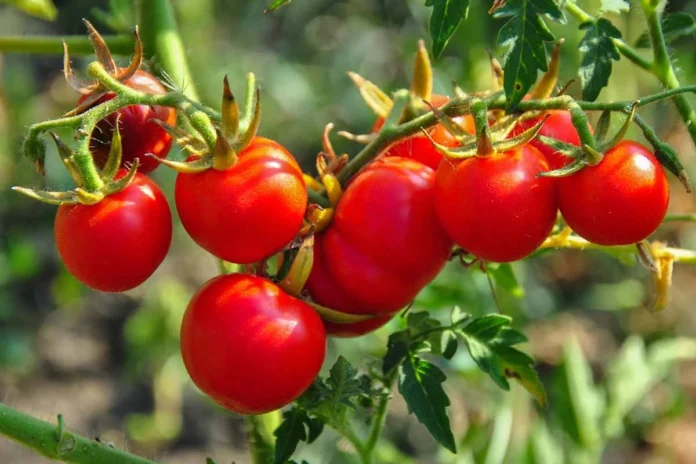Arabfields, Santiago, Chile — The 2025/26 Chilean cherry export season has officially commenced, marked by the arrival of the first air-freighted consignments in China last week. This early kickoff underscores the industry’s ongoing push for innovation and efficiency, aiming to capitalize on premium prices in one of the world’s largest fruit markets. Two prominent exporters, Global Talsa and Garcés Fruit, spearheaded the initial shipments, signaling robust demand and refined logistics that could set the tone for a record-breaking year.
Global Talsa dispatched 1.4 tonnes of fresh cherries via Seafrigo Lancargo, destined for Shanghai. Shortly thereafter, Garcés Fruit followed with a second batch harvested from the Coquimbo Region and processed at its state-of-the-art facility in Mostazal. These moves highlight the strategic importance of air transport for ultra-early varieties, allowing producers to reach consumers weeks ahead of bulk sea shipments.
“The move confirms that the market values early delivery and that logistics are fine-tuned to capitalize on the price premium of the first few weeks,” stated Frutas de Chile, the national fruit exporters’ association, in a recent announcement. This sentiment reflects broader industry optimism, as Chile’s cherry sector continues to expand amid growing global appetite, particularly in Asia.
Garcés Fruit emphasized improvements in airport security protocols at Santiago’s Arturo Merino Benítez Airport, from which both shipments departed. The company attributed the seamless process to its certification as a “recognized shipper” by Chile’s Directorate General of Civil Aeronautics (DGAC) in December 2024. This status streamlines inspections, minimizing delays and helping preserve the cold chain, a critical factor for maintaining the fruit’s firmness and quality during transit.
Such advancements are vital in an industry where even minor disruptions can lead to significant losses. In previous seasons, logistical bottlenecks, including port congestion and weather-related delays, have occasionally hampered exports. However, the 2025/26 campaign appears poised for smoother sailing, with exporters like Garcés Fruit leveraging these certifications to enhance competitiveness.
The precocious start to the season owes much to technological and varietal breakthroughs. Notably, the introduction of the AG2 cherry variety has enabled harvests in northern regions like Coquimbo and even the Colchagua Valley as early as mid-October. AG2 cherries boast a caliber exceeding 30 millimeters, slightly above average, along with exceptional firmness and extra-sweet flavor profiles, making them ideal for premium markets.
Improved post-harvest techniques, including advanced cooling and packaging methods, have further advanced the commercial window. These developments not only extend shelf life but also ensure consistency in size, color, and taste, key attributes that Chinese consumers prioritize. For producers in Chile’s northern zones, this means accessing lucrative early-season slots that were previously dominated by later-ripening areas.
Frutas de Chile advises exporters planning air shipments to focus on “processing speed, cold chain integrity, and commercial agreements that allow immediate rotation at destination.” This rule of thumb remains unchanged, emphasizing the need for seamless coordination across the supply chain to maximize returns.
Chile’s cherry industry is on track for unprecedented growth this season. With planting areas expanding to approximately 80,000 hectares, a 4.6% increase from the previous year, production is forecasted to hit new highs. Industry estimates project exports of around 131 million boxes, equivalent to roughly 658,000 tons, representing a potential 59% surge.
China, absorbing over 90% of Chile’s cherry exports, remains the cornerstone market. Imports are expected to reach 600,000 tons in 2025/26, up from the previous season’s 44% year-on-year growth. This demand is fueled by cultural festivals like the Chinese New Year, where cherries symbolize prosperity and are a staple gift item.
However, challenges persist. Oversupply risks from rapid expansion could pressure prices, as seen in early 2025 when Chilean arrivals impacted local Chinese greenhouse production. Industry leaders, including Alejandro García-Huidobro of Prize, advocate for greater collaboration, quality focus over quantity, and market diversification to mitigate these risks.
Promotional efforts are ramping up accordingly. Frutas de Chile unveiled its flagship “Chilean Cherry Ice and Snow Festival” campaign at the 2025 China International Fruit Expo, targeting expanded buyer bases in second- and third-tier cities through digital platforms like TikTok. Early shipments have already fetched premium prices, with some batches selling for up to $150 per 5.5 pounds on exclusive online sales.
While air shipments dominate the early phase, sea transport will handle the bulk during the December peak. CMA CGM has confirmed the launch of its seasonal Cherry Express 2025 service, featuring eight dedicated sailings from the Port of San Antonio with an estimated 23-day transit to Shanghai.
The inaugural vessel, the Legacy, is slated to depart on November 28, followed by weekly voyages through mid-January. This schedule aligns with key Chinese holidays, including the Laba Festival and Spring Festival, ensuring timely arrivals for heightened demand.
For producers and exporters, success hinges on synchronizing harvest and packing timelines with estimated departure times (ETDs) and securing contracted reefer container space. In the 2024/25 season, over 17,000 containers of cherries were shipped from San Antonio terminals alone, a figure likely to rise this year. Complementary efforts by airlines like China Eastern, which plan to import 12,000 tonnes (5,500 by air, 6,500 by sea), further bolster the logistics framework.
As the season progresses, the Chilean cherry sector faces the dual imperative of scaling production while addressing sustainability concerns. With climate variability posing risks to yields, investments in resilient varieties and efficient water management are paramount. Additionally, while China dominates, efforts to diversify into markets like the United States, where Frutas de Chile plans partnerships with 30 retail chains, aim to balance dependencies.
Industry experts remain cautiously optimistic, emphasizing unity and strategic planning. “Unity is the key to success,” noted García-Huidobro, calling for collaborative approaches to navigate potential logistical pitfalls and market fluctuations.
This year’s early shipments not only herald a bountiful harvest but also exemplify Chile’s evolving role as a global fruit powerhouse, bridging hemispheres through innovation, logistics, and consumer-driven quality.












